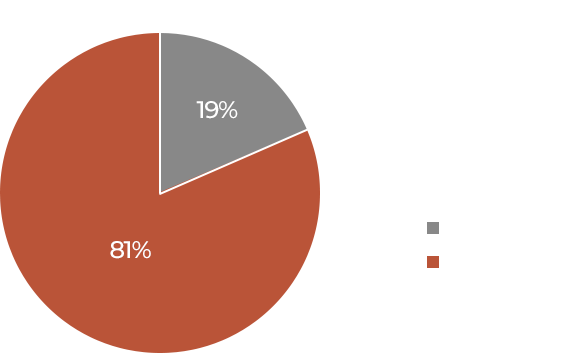Fueling the Climate Crisis :
SOUTH KOREA'S PUBLIC FINANCING FOR OIL AND GAS

94.7% of the world’s CO2 emissions comes from burning fossil fuels.
Emissions from oil and natural gas account for 54.4% of global CO2 emissions.




The estimated emissions from developed fossil fuel reserves already
exceed the global carbon budget available to meet Paris Agreement
temperature goals, leading to temperature rise beyond 2˚C.
We cannot afford more fossil fuels.
However, public finance is still driving new fossil fuel development around the world.
South Korea was identified as the 4th largest public financier of
fossil fuels among G20 countries.
In April 2021, South Korea announced its official moratorium on overseas
coal financing. However, coal is just a small part of the problem.
Solutions for Our Climate investigated
Korean public financial institutions’ support to oil and gas
infrastructure in the past 10 years.

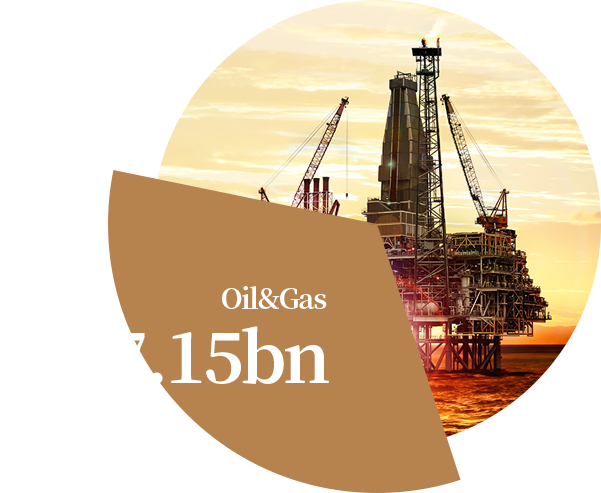
The Export-Import Bank of Korea (KEXIM), Korea Trade
Insurance Corporation (K-SURE), and Korea Development Bank
(KDB) have provided $127.15 billion to oversea oil and gas
projects in the past ten years.
Korea’s public finance to oil and gas is in fact 13 times larger
than the amount of coal financing in the same period.
Korea's public financing for oil and gas infrastructure
covers the entire value chain.
Upstream refers to the exploration,
extraction, production and processing of
oil and gas.
Midstream is related to the transportation
of oil and gas, including pipelines,
transportation vessels, storage, terminals,
and liquefaction and regasification plants.
Downstream includes
refining crude oil into
various products, as well as
end-use facilities such as
thermal power and
petrochemical plants
The major Korean players in the upstream sector are the
state-owned Korea Gas Corporation (KOGAS) and
Korea National Oil Corporation (KNOC), as well as private
corporations such as SK E&S, GS Energy, and POSCO
International.






Korean shipbuilders and construction companies are
very active in the midstream sector, building pipelines
and terminals, as well as transportation vessels for crude
oil and liquefied gas.
The majority of public financing in the midstream
sector is going into ship financing, particularly in the
form of guarantees, with a noticeable increase
in recent years.
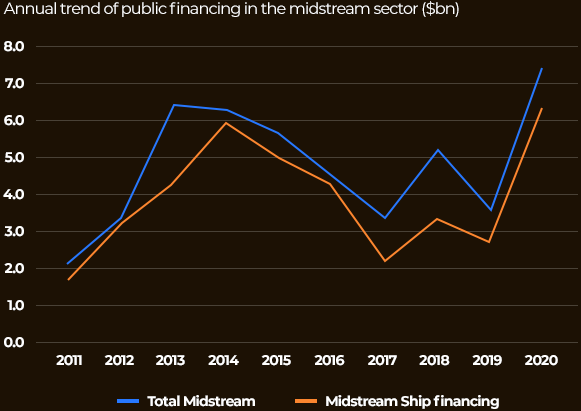
Public financing in the downstream sector is provided
to Korean construction companies including GS E&C,
Daewoo E&C, SK Ecoplant, Hyundai E&C,
and Samsung C&T. These companies have taken
Engineering, Procurement, and Construction (EPC)
projects for oil refineries, petrochemical plants, and
thermal power plants.





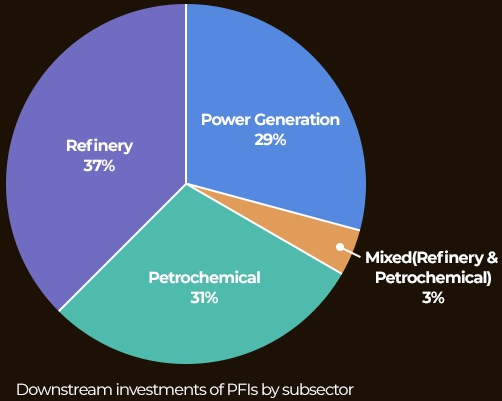

Financing
Korea has the largest shipbuilding
industry in the world, dominating
44.2% of the global market in 2018,
followed by China (32.0%) and
Japan (12.6%).
Shipbuilders received 46% of all
Korean public finance to oil and gas
in the past ten years, which amounts to
$57.7 billion.
Drillships, offshore plants, and
transportation vessels are critical
components of the oil and gas value
chain and also major products for
Korean shipbuilders.
In 2020, the top three Korean
shipbuilders won 73% of the
LNG carrier vessel orders and 81% of
Very Large Crude Oil Carrier (VLCC)
orders in the global market.
Public financial institutions provide
loans and guarantees to
the shipbuilding industry.
Refund Guarantees (RG), in particular,
are a critical element of ship financing.
Public financial institutions such as
KEXIM and K-SURE are major issuers of
RGs for Korean shipbuilders.
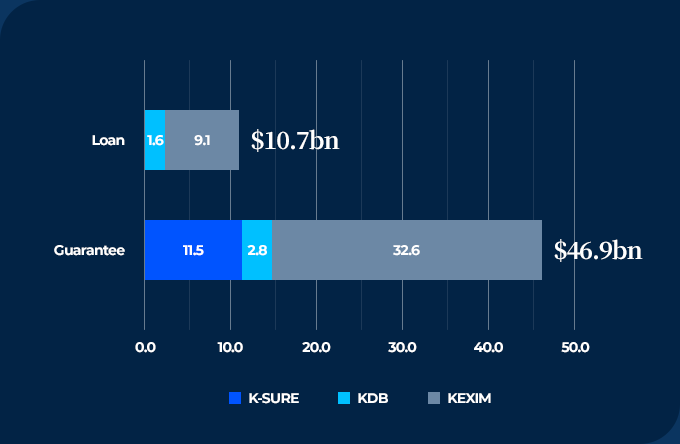
Ships and offshore plants play a key role in the
production of oil and gas. Drillships are used
for the exploration and drilling of new oil and
gas wells in the ocean.
Offshore platforms are used for extraction,
processing, and storage.
Transportation vessels include crude oil carriers,
gas carriers, and regasification units for LNG.
Out of $57.7 billion, 71% was provided to
transportation vessels. LNG carriers received
the most public funds, $23.14 billion,
as Korean shipbuilders are dominant
in the LNG carrier market.
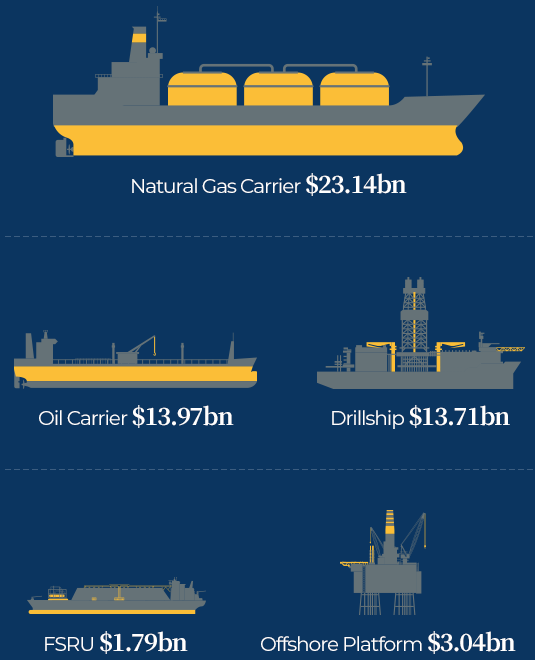
Why is this a problem
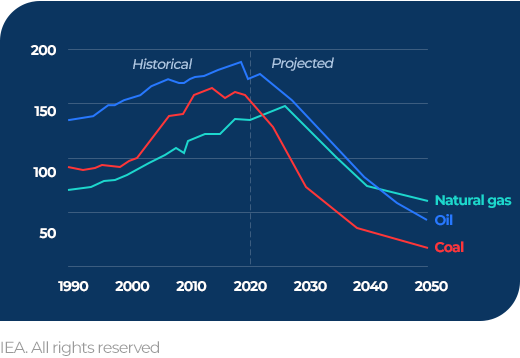
Financial Risk
Oil and gas projects are exposed to significant “stranded asset
risk.” Oil and gas infrastructure requires massive funding fort
construction and needs to operate for decades to recover initialt
investments. However, the phase-out pathway for fossil fuels ist
likely to render the asset useless before its end of life.
In Net Zero by 2050: A Roadmap for the Global Energy Sector,
the IEA has suggested there is no need for investment in new
fossil fuel supply for net-zero pathway.
Continued financing for oil and gas will compromise the
financial stability of public financial institutions.
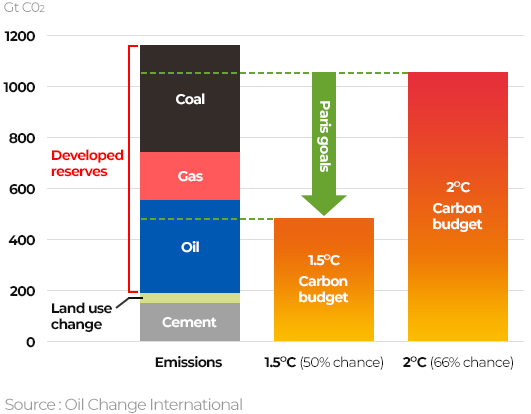
Environmental Risk
Investment in fossil fuels increases carbon emissions.
Additional investment is unnecessary because existing global
fossil fuel reserves already exceed the carbon budget for Paris
climate goals.
Public financing to fossil fuels cannot be justified because
exacerbating the climate crisis contradicts the public interest.
Transition Risk
Public finance is de facto a form of government subsidy or
support.
Providing public support for fossil fuels increases the transition
risk to the economy, locking in more jobs, capital, and
infrastructure into industries that need immediate transition.
Public finance to oil and gas is a threat to the economy.

Legal Risk
Financing fossil fuel-related projects with public funds
contradicts the state’s obligations under international law as it
significantly contributes to increasing carbon emissions.
Public financial institutions are beginning to restrict their
investment in fossil fuels, including oil and gas.
The UK Government announced its plans to stop public
financing for fossil fuels in December 2020.
The European Investment Bank plans to do the same by the
end of 2021. Swedish export credit agencies EKN and SEK
have announced their plans to stop financing the exploration
and extraction of fossil fuels by 2022.
We suggest the following to the Korean public financial institutions:
- 1Stop providing public finance to new oil and gas projects and halt increasing the
financing to existing ones - 2Establish concrete plans to decrease existing support for oil and gas projects in line
with the Paris Agreement temperature goals - 3Establish procedures and standards to screen potential projects based on their
climate impact - 4Implement transparent standards to assess and disclose climate-related financial
risks of the financial institution


